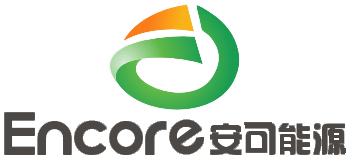- English
- Español
- Português
- русский
- Français
- 日本語
- Deutsch
- tiếng Việt
- Italiano
- Nederlands
- ภาษาไทย
- Polski
- 한국어
- Svenska
- magyar
- Malay
- বাংলা ভাষার
- Dansk
- Suomi
- हिन्दी
- Pilipino
- Türkçe
- Gaeilge
- العربية
- Indonesia
- Norsk
- تمل
- český
- ελληνικά
- український
- Javanese
- فارسی
- தமிழ்
- తెలుగు
- नेपाली
- Burmese
- български
- ລາວ
- Latine
- Қазақша
- Euskal
- Azərbaycan
- Slovenský jazyk
- Македонски
- Lietuvos
- Eesti Keel
- Română
- Slovenski
- मराठी
- Srpski језик
The new national standard of lithium battery is officially implemented! Who has the advantage over lithium battery versus lead acid?
2022-11-22
This method greatly strengthens the management of the lithium-ion battery industry, guides the transformation and upgrading of the industry, vigorously cultivates strategic emerging industries, and promotes the healthy development of the lithium-ion battery industry.
There is no doubt that the new national standard for electric vehicles has had a significant impact on lead-acid batteries. Many low-speed power lithium battery brands dedicated to electric vehicles have seen a significant increase in sales in 2018, and have accumulated energy for the first year of the new national standard! Many people even think that the new national standard for electric vehicles will become a turning point in the decline of the lead-acid battery industry? Is it true?
1. Don't overestimate the impact of the new national standard on the lead-acid battery industry
Since electric vehicles are divided into three categories after the implementation of the new national standard, and electric mopeds and electric motorcycles have no requirements on the weight of the whole vehicle, these two types of electric vehicles are the categories that can obtain more profits, and are also the focus of manufacturers. As long as they meet the standards of electric motorcycles and mopeds, lead-acid batteries are still the first choice!
2. Don't underestimate the acceptance of lithium batteries in first tier and second tier cities
In the first and second tier cities such as Shanghai and Beijing, the acceptance of lithium batteries is already quite high! On the one hand, this is the impact of the policy, on the other hand, it also reflects that the lithium battery audience is not very sensitive to the price, but for consumers in the township market, it takes time and process to accept new things! Of course, this does not rule out that some lithium battery brand channels have been promoted very well, with good sales in the third and fourth tier cities!
3. There are still many problems to be solved for lead-acid and lithium batteries
If electric vehicles want to be fully lithium-ion electrified, they still face many problems!
First: Although the manufacturing cost of high-quality lithium battery cells has decreased, the price is still high for the price sensitive electric two wheeled vehicle industry.
Second: The lithium battery industry has so far lacked recycling channels. According to data, the recycling rate of lithium battery cells in China is less than 10%.
Third: Lithium battery accidents occur frequently, and safety is the key.
Of course, for lead-acid batteries, the new national standard for batteries that has been issued requires the specific energy by mass standard and requires that the energy density meet the national standard indicators, which also puts forward new requirements for the industry! Both lead-acid batteries and lithium batteries will face significant challenges in 2019!



